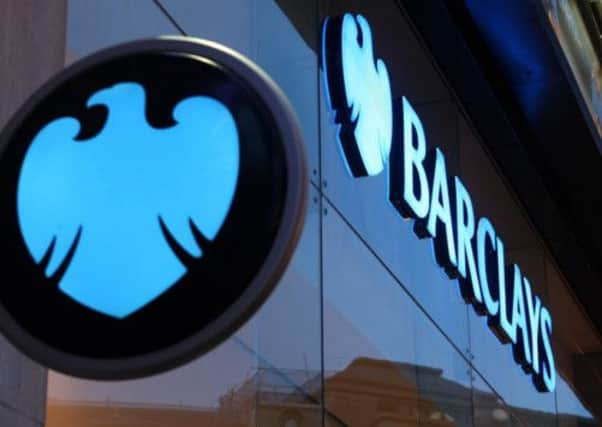Investors back Barclays in £5.8bn fund-raising drive


The bank launched a rights issue three weeks ago, prompted by the regulator’s demand that it improve its leverage ratio – a measure of capital to assets.
Barclays said the bookrunners for the offer sold £463m of shares not taken up by investors at 268p each, a 1.8 per cent discount to Thursday’s close.
Advertisement
Hide AdAdvertisement
Hide AdThe rights issue, the biggest in the city for four years, was part of what Barclays described as a “bold but balanced plan” for meeting demands that it plug a £12.8bn hole in its finances. Barclays raised the equivalent of 15 per cent of its market value.
The bank also plans to sell £2bn of bonds that will convert into equity if the bank hits trouble. It will also shrink the balance sheet of its investment bank to help it meet its leverage ratio target.
Antony Jenkins, who took over as chief executive a year ago, is trying to rebuild Barclays’ reputation after a string of scandals.
He instigated a major restructuring in the wake of last year’s Libor scandal. The bank was also hit by a £50m fine over claims it acted “recklessly” in its multi-billion pound bailouts from Qatar in 2008.
Advertisement
Hide AdAdvertisement
Hide AdQatar Holding invested £5.3bn in two fund-raisings, which helped Barclays to avoid the Government bailouts of rivals Lloyds and Royal Bank of Scotland.
It is still Barclays’ biggest shareholder with a 6.3 per cent stake. It bought shares in the rights issue to maintain its stake.
Mr Jenkins said the rights issue would deal “quickly and decisively” with the regulator’s demands.
The 185-page prospectus for the rights issue disclosed that the bank will pay £100m in refunds to 300,000 customers after making errors in personal loan paperwork.
Advertisement
Hide AdAdvertisement
Hide AdShareholders were given four options in the fund-raising – take up the rights, sell the rights, sell enough rights to cover the cost of taking up the remainder, or do nothing.
Former chief executive Bob Diamond, who was forced out of the bank in the wake of its Libor scandal in 2012, was among those to buy shares in the rights issue.
Investors have broadly welcomed Mr Jenkins’s turnaround plan, although he still faces challenges to improve profitability and tackle a raft of legacy issues.
The rights issue forced him to push back his target to deliver a return on equity above about 11.5 per cent by a year to 2016.
A slowdown in income from selling bonds and interest rate products, the core business for investment banks, will hurt third-quarter profits across the industry.